After some last minute packing, at 6pm William helps me catch a taxi to the airport. The taxi driver takes a route through town, and I gain a wider appreciation for the size and diversity of this city of 6.5 million people.
|
I must fly to the U.S. to be with family and we spend Saturday doing a few last things on my list of to-do's. We start at Plaza de Armas and the Catedral Metropolitan, a neo-classical cathedral completed around 1800. A stroll through the Plaza de Armas brings us to the Enrique Villalobos sculpture " Al Pueblo Indígea". It eerily commemorates the indigenous people of Chile. On another side of the plaza we find the Museo Histórico Nacional. It's a small but interesting museum covering the history of Chile. Unfortunately our Spanish is not up to a level to be able to get full meaning from the signage. Google translate helps with a few phrases. The Lasterria area is our destination for lunch. We have chosen Chipe Libre - Republica Independiente del Pisco, which not surprisingly is famous for pisco sour's and a more modern menu. William chooses a pisco from Chile while I have one from Peru. Although the server described the pisco rivalry between the countries and the Chilean claim of "the best", we prefer my drink over William's. The home made taro chips are wafer thin and delicious - we ask for a refill before our meals arrive. My short ribs are fantastic and William has the best steak he's ordered in Chile. The restaurant deserves it's positive reputation.
After some last minute packing, at 6pm William helps me catch a taxi to the airport. The taxi driver takes a route through town, and I gain a wider appreciation for the size and diversity of this city of 6.5 million people.
0 Comments
We have booked a full day small group tour to Valparaiso. On a crisp Fall Friday morning we wait outside a nearby hotel for the tour. We are the last of the group to be picked up in the 20 person coach which includes people from the U.K., U..S., Canada, Brazil and Chile. Our first stop is the Emeliana Vineyard in the Casablanca Valley. This vineyard as well as the other vineyards and winery of Emeliana are totally organic. The tour guide explains how it took 3-5 years to convert from standard growing and processing techniques to be organic. The tour through the vineyard highlights the chickens, guinea fowl and llamas which contribute to the organic farming. I have never before seen the teeth of a llama up close, and they are quite scary. Of course when their mouths are closed the llamas are adorable. We also learn about the natural plants used for biodynamic farming. The tour is very informative and fun, but the best part is the wines. They are very good and moderately priced. Their high-end Coyam which received 92 points is only $25 at the vineyard. If it were Napa the price would be 2-3 times higher. The drive continues another 45 minutes until we arrive in the center of Valparaiso. Valparaiso is also famous for the 1906 earthquake which registered 8.2 and reports said the quake lasted four minutes. The city was mostly destroyed and was rebuilt. The area continues to be hit with smaller earthquakes, similar to San Francisco which was also hit by a major earthquake in 1906. The coach driver drops us and two tour guides off at a spot where we pick up a 1950's era street car to the port. This is not a car designed for tourists, it is a way that the people of Valparaiso get around town. We exit the street car and walk to the port where we learn that the port was busy and the town very wealthy prior to the completion of the Panama Canal a little over 100 years ago. Since then it has been in gradual decline. The walking tour moves from the port to one of the cerro's which make up the city. The only problem is that the funicular to take us to the top is out-of-service. The tour guides (in their 20's and 30's) cheerfully say it is not an issue, there are always the stairs. Oh-oh. They advise us we do not have to hurry, we can take our time as we begin the 80-100 stairs, which somewhat mercifully have occasional flat areas between some of the flights. Once at the top we really start a walking tour of incredible street art spread across three cerro's, which are effectively neighborhoods. The 2+ hour tour also affords views of the city and harbor and ends with a funicular ride down to our awaiting coach. The driver takes us through parts of the town to a seafood restaurant with good views of the harbor. I break my vow not to order seafood again on mainland Chile (it always seems to be overdone) and I am glad that I do. My whitefish is moist and flavorful. After our large meal we all pile back into the bus for the 90 minute ride back to Santiago, arriving around 6pm. William and I agree that Valparaiso would be an interesting city to spend 1-2 days exploring on our own.
On Wednesday and Thursday we meander around Santiago. We enjoy the central markets in most of the cities we visit so we must check out what Santiago has to offer, especially since Mercado Central de Santiago is only one kilometer from our apartment. We arrive at 11 am to a large building with a lot of wrought iron and a fountain in the center. The primary product within the Mercado is seafood - fresh as well as at the ~20 restaurants. There are also a few butcher shops on the exterior perimeter of the building. Outside the Mercado there are a number of stalls with the fresh fruits and vegetables for which Chile is so famous. It's an hour of fun walking around plus we pick up food for a couple of meals in the apartment.  Later we walk to Central Cultural Palacio de la Moneda only to find out that the exhibit halls are closed for the next week. 😒 At least we get to view the interesting sculpture in the courtyard. Luckily Museo Chileno de Arte Precolumbino is only a few blocks away. In the walkway to the Museo we encounter a group of string musicians, most likely students, playing for tips. We stop and enjoy the music for a while and put some peso's into their case. Museo Chileno de Arte Precolumbino is very enjoyable with some incredible pieces. We spend almost two hours observing the exhibits on three floors. Between cultural activities we also take some time to visit the Las Condes area, specifically in search of Cuban cigars. William is delighted by La Casa del Habano. It's a cigar store, smoking lounge and bar. He picks up a couple of cigars for future smokes in Santiago and some to take home to enjoy with friends.
We have signed up for a wine tour and on Tuesday Mick picks us up at a nearby hotel a little before 10am. As he drives us to the Maipo Valley we learn that he is originally from California and was a semi-pro snowboarder. He's been living in Chile permanently for the past four years and last year he married a Chilean woman. He's a second level sommelier and considering going for third level. Our first winery is Perez Cruz. It's considered a boutique winery in Chile, producing 100,000 cases a year. We have a private tour of the winery with Maria José. They have just started harvesting grapes from their vineyards and we get to see the operation close-up. Maria José is very informative - this is one of the best tours we have ever taken. When we discuss a stage of wine production she will sometimes ask the men and women a technical question and translate their response for us. Some of them even alter their activities to be able to demonstrate for us, such as the man treating the used barrels with sulphur gas. We talk with the Assistant Winemaker as he is supervising a crush. 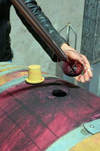 As part of the cellar tour Maria José pulls 2017 Cabernet Sauvignon first from an American Oak barrel and has us taste and discuss. Then we taste the same vintage wine that has been asking in French Oak and discuss. We talk through how their everyday level of wine is aged 60% in American and 40% in French, while their mid-level and premium wines are 100% French. Following the tour we taste two of their wines, the Reserva Cabernet and the Limited Carmenere. The Reserva level is actually their "everyday wine". Normally Carmenere has too much green pepper notes for both of us, but it is not predominant in their wine and it is delicious. We buy a bottle to enjoy at the apartment.  Then we are off to Santa Rita Winery which was established in 1880. As we drive Mick discusses the walnuts, fruits and vegetables grown in the area as well as the climate. At Santa Rita have a tasting (actually two 3- oz pours) of the Triple C and their Malbec. I really like the Triple C, which is a blend of Carmenere, Cabernet Franc and Cabernet Sauvignon. Conch Y Torro is our last winery. This operation is huge with vineyards and wineries in Chile, California and New Zealand. Mick has made reservations for us at their restaurant. We have a good meal on the patio then take their tour along with another 20 English speakers. We visit the grounds, vineyard and cellar, learning the story of the devil while doing three small tastings. Following the tour we meet Mick at the bar within their restaurant for a tasting of a premium wine.
We chat with Mick on wine and a huge range of other topics as he drives us back to Santiago, arriving at 6pm. Terrific day! We spend our first full day in Santiago getting used to the apartment, buying provisions and checking out the area. We have a light lunch at Quijote restaurant along one of the pedestrian streets in downtown. It is about a 8 block walk from the apartment. On our way back we spend some time relaxing in Constitution Square. 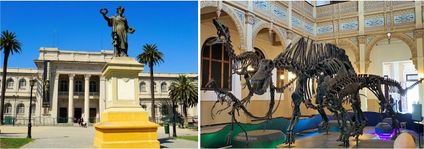 Saturday we have a longer walk, going to see the Museo Nacional de Historia Natural (the Natural History Museum). Sadly, there are no cafe's open where we can sit down and enjoy a cup of coffee. The museum is okay but we have definitely been through better. On our walk back we find a Cervezeria along Avenida Brazil which we think may become our go-to place if we want something light to eat and a cold beverage. In the evening we use TripAdvisor to identify potential restaurants within walking distance. Palacio del Vino is our first choice. We arrive right as a group of 20 bicyclists are being seated. Hmmm. The owner/maître d/waiter tells us no problem. He is true to his word. Anne selects the four-course tasting menu paired with wines while William chooses to order a steak and pair some cerveza's. The food and beverages are good with some interesting flavorful twists, but like a number of restaurants we try on the mainland, Anne's fish is a bit overlooked. However, it is one of our better meals in mainland Chile. Part of the reason we selected the Santiago apartment was it's proximity to the subway. Sunday is normally a quiet day in South America so we think it should be a good time to learn the subway. It turns out to be quite easy to buy a BiP card, fund it and catch our first subway train to the Bellas Artes station. Our destination is Museo Nacional Bellas Artes, an easy 10 minute walk from the station. We spend about 90 minutes walking through the museum. The architecture is beautiful and we enjoy the sculptures in the main hall. Most of the rest of the museum is unimpressive. Following the Museo we walk toward Patio Bellas Artes. There are a large number of people cycling, running and skateboarding. Some of the streets have been shutdown to facilitate exercising and enjoying the outdoors. We enjoy a late lunch at one of the 20+ restaurants at the Patio, then make our way home via the subway. All-in-all a pleasant day.
We are not as lucky on our flight from Easter Island to Santiago - we do not get an upgrade and all seats on the plane are full. But the movie options keep us entertained and napping also occurs (possibly with snoring). After collecting our bags I step up to the taxi counter within the airport to arrange for our ride to the apartment. We need to show our prepaid ticket when we get to the front of the line. The 13km (8mi) ride of 20 minutes takes us downtown. The apartment is located in a 30 story building with two towers. We stop at the front desk and pick up our key. There's a line waiting for the elevators in our tower and we soon learn why. Two of the three elevators are not working! A woman in front of us says it is particularly bad 8-10am and 6-8pm. We wait 15 minutes for our turn. Our first impression is not favorable. From the photos on the booking site we knew we were renting a small one bedroom apartment, probably similar to what we had in Vancouver last year. When we open the door we see that it is even smaller and more basic. Hmmm.
We unpack, login to wifi, and search for restaurants nearby. We walk ~ 8 blocks toward Plaza de Brazil to Las Vacas Gordas and our spirits are lifted. The busy restaurant specializes in grilled meats and we have decent steak dinners. When we return to the apartment at 9:30pm the wait for the elevator is 5 minutes. I message the apartment manager and let her know we are not pleased with the situation. She quickly responds that the last time she was here two elevators were working and proactively offers a discount for the inconvenience, which she processes the next morning. We watch a movie then turn in for the night. We'll see how we feel about the situation in the morning after we have a chance to shower and try out the kitchen. 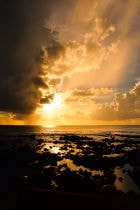 Easter Island has been an interesting experience. The wonder of these people who could carve such large figures from stone, transport them many kilometers away and erect them reminds us of the wonders of the Great Pyramid, Taj Mahal, Machu Pichu and Chichen Itza. The archeologists here have theories on how the moai were erected and in their reconstruction efforts have proven the theory with a moai weighing tons. The moai were very gradually raised by using ramps to initially place the statue face down. They then pulled the figures up a little bit with ropes from the back, inserting stones in the front, pull up again, insert stones... repeat until erect. The largest moai erected by the Rapa Nui people weights 86 tons. Sounds like a tremendously daunting activity undertaken by many, many people over a very long period. And then there are the ahu blocks weighing tons which are perfect cut and placed. Perplexing. It makes one wonder if there were ancient technologies now long lost, not just brute force and simple physics.
We start our tour on Wednesday at Vinapu, which is very close to the airport. The moai remain in their toppled state. The ahu includes large blocks of stone which are perfectly cut, similar to what we saw at Machu Pichu. It also faces the morning sun at the winter solstice. The archeologist Heyerdahl used these and other factors in developing his theory that the Rapa Nui are descendants of Peru, although most other Archeologists remain convinced that they were Polynesians. From Vinapu we go to the site we deferred yesterday due to rain. It is a recreation of a Rapa Nui village. Chris shows us how the huts are constructed with holes bore into the foundation stones to hold sticks which create the frame. Reeds from one of the craters are placed on top of the frame to complete the hut. We also check out a stone chicken coop and the way crops were planted within stone enclosures to protect them from the winds. It's a drive uphill on the crater Rano Kau to Orongo Village. At times the road is mostly mud and we appreciate why Chris drives a 4-wheel drive vehicle. He tells us about working on Bora Bora for a time and learning how to drive the side of a mountain. The village is located on the cliffs with small islands offshore. In the 18th and early 19th century the tribes would come to this site for a race and ceremony. The race was who would be the first person from the tribes to bring back an egg from the manatura bird which seasonally nested on the islands. It was very dangerous and participants often fell to their deaths on the cliffs. The restored structures are largely flat stones piled upon one another with sod on their roofs. It is believed that the structures were only used in ceremonial times, no one lived in them permanently. Behind Orongo Village is the cauldra of Rano Kau. Chris's wife's grandmother tells stories of the women coming from the village once a week to wash clothes in the fresh water. The reeds of the cauldra are similar to those in Lake Titicaca, and are the same reeds as are used in the construction of huts. With a light rain coming down Tahai Ceremonial Complex and lunch is our next stop. There are three ahu's in the complex. Ko Te Riku stares at us with it's restored eyes. This is the only moai with eyes in place, a decision made by the archeologists to assist with tourism. Nearby is Ahu Tahai, with a lone moai. At the other end of the complex is Ahu Vai Ure with five moai restored to different degrees. As we view the ahu one of the flights from Santiago comes in for a landing - such a dichotomy. Lunch at a restaurant on the edge of the complex is very good and allows the rain to pass. The afternoon takes us first to Ahu Akivi, the only inland ahu. The seven moai look out to the sea, which is also unusual as the other ahu's have maoi with their backs to the sea. Each is about 16 feet tall and weigh about 18 tons. It is said that the moai look to the point where the sun sets during the equinox. According to an oral tradition, Hotu Matu’s priest had a dream in which the King's soul flew across the ocean when the Rapa Nui island was seen by him. He then sent scouts navigating across the sea to locate the island and to find people to settle there. Seven of these scouts stayed back on the island waiting for the king to arrive. These seven are represented by the seven stone statues erected in their honor. Puna Pau is the quarry which provides the scoria red rock used to carve the topknots and eyes. We meander around the quarry looking at the topknots before heading into town to buy some Polynesian music cd's and then say goodby to Chris. One of our favorite movies is Joe Versus the Volcano. In it they travel to a south sea island called Waponi Woo where everyone on the island drinks orange soda. Since we have been here we have noticed a lot amount of orange soda being consumed. Before dinner Anne can't help herself - she has an orange soda with the replica moai out by the pool. William uses the time to photograph the flowers. This evening we have dinner at Te Moana and after dinner sit in the nearby park to watch the sun go down. Beautiful!
Eduardo, one of the Naturalists on our Antartica trip put us in contact wit Alex and Chris who conduct the Easter Island excursions for Lindblad/National Geographic. We arrange directly with Chris to be our private tour guide for two days. Wednesday morning we have a good breakfast at the hotel before Chris picks us up at 9:30. As he drives we learn about the island. It is believed that the island was populated 600-700 AD probably from a Polynesian island (possibly one of the Marqueesas Islands). The native name for the original inhabitants and their descendants is Rapa Nui. Sitting at 27 degrees latitude, the climate is sub-tropical with lows of 14C (57F) in winter, and a high of 30C (86F) in summer. It is called Easter Island because the first contact with Europeans occurred Easter Sunday, 1722. Three volcanos are on the island and many hills which are "parasites" off of the volcanos. Chris points to a hill where once a year they have races that he called Rapa Nui bobsledding. People put together two banana trunks with some cross-bracing to make sleds. Then they race the sleds down the hill. It sounds hysterical (and dangerous). We are anxious to see the moai stone carvings which have made Easter Island so famous. After a 20 minute drive we arrive at Anakana. There's a beautiful beach and on the grassy hillside are two ahus, the platforms upon which the stone moai figures are placed. Ahu Nao Nao has seven moai, most of which have been restored. The size of the figures and their shapes are impressive, especially when you consider that they are from the 15th century. Ahu Atori has a single statue, which is believed to be created in the 14th century. The shape of the head is much more square and the neck is not as developed. We learn that the round red tops on some of the statues are called topknots, which represent the headdress of a chieftain or powerful person and come from a different quarry than the rest of the statue. The eye sockets are hollow. The priests and chiefs would install the eyes for ceremonies, but otherwise they were stored separately. From Anakana we drive to Ahu Tongariki, which with it's 15 moai is the largest ahu. The site is right on the ocean with cliffs off to one side. Like the other sites, these moai were toppled during wars between tribes (probably late 18th century), but then in the twentieth century the statues (many in pieces) were swept inland by a tsunami due to an earthquake in Chile. The restoration project occurred between 1990 and 1996 with the aid of the Japanese, who donated a crane as well as expertise. There was much debate between the archeologists as they chose the pieces of moai and the materials to be used for reconstruction. For fun we add ourselves as the 16th and 17th moai in one of our photos. The moai face away from the ocean and onto the village that once occupied this area. We walk around the site and observe some of the foundations of the buildings and the petroglyphs in the rocks. From Ahu Tongariki we can see the volcano (Rano Raraku) a short distance away which provided the quarry for the moai and where statues remain in both incomplete and completed states. We arrive at Ranu Raraku and are not ready for the number of moai around the site - there are close to 400. Many on the hillside appear to be just heads, but their bodies are just buried. Chris explains that there is just one moai with legs on the whole island. All the rest are from the waist up, usually with their hands portrayed by etching on the front of their stomachs. We walk up closer to the stone quarry to see the partially completed moai. Unfortunately our cameras just aren't able to capture what we see. However it isn't hard to imagine perhaps thousands of people involved in the rough carving, finish carving and then transport of the statues. After climbing the paths around the quarry we return to the visitor center and order up tuna empanadas for a late lunch. They're great and pair well with a cold beverage. Lunch also gives us a chance to rest our legs and feet. We drive 14km along the coast and stop at Akahanga, an ancient fishing town. It is where the first king of the Rapa Nui is believed to have been buried. The site has not been restored at all and the ahu and moai stones lie about. There are some foundations of buildings as well as umu pae, the stone ovens made of five stones. Nearby there is a small cave called Ana Akahanga that was used by fishermen as a refuge during storms or as a place to spend the night. As we walk around the site it starts to sprinkle, then rain, then become a downpour. We do not need to take refuge in Ana Akahanga, but do regret that we left all of our raingear in the car. Given our soaked clothing we agree to postpone what would have been our last stop of the day until tomorrow. Of course within the 20 minutes that it takes to drive to our hotel the rain has stopped and the sun is beginning to pop out. Island life. This evening we dine at Tataku Vave, which is located along the shoreline just outside of town. The ceviche is very good and we both enjoy our fish entrees. The entertainment of the canoes, fishermen and sunset are priceless.
Marcela has ordered a car to take us to the airport at 8am on Sunday. She greets the driver at 7:45, watches as the bags are put into the car, tells me I'm lovely, gives me an Argentine kiss then taps John on the arm and finally waves as the car pulls away. It has been very nice staying in her apartment and she and her daughter have been very helpful. This has been William's favorite apartment during our trip. William and I luck out and no one is seated between us on the flight so we have a little room to stretch out a bit. Our 90 minute flight to Santiago takes us over the Andes. They are so impressive - I just have to take a few photos from the plane window. I've booked us in the Hotel Diego de Alamagro Aeropuerto for one night. It's about a 10 minute ride in a complementary shuttle bus. The hotel is clean and better than we expected for $80 including continental breakfast. We spend the day relaxing near the pool, catching up on online activities, and napping. The alarm jolts us a 5:15 am Monday. We dress, have a little breakfast and pile into the overcrowded 6:30am shuttle bus. We encounter Monday morning traffic but arrive at the airport before 7am. When I checked in online it would not allow me to select seats, but that's okay because we receive complementary upgrades to business class on a new Dreamliner. Score! The 5 hour flight gives us time to watch some movies and catch a short nap, although neither of us use the lay flat feature. The temperature and the airport in Hanga Roa, the only city on the island, reminds us of Papeete, Tahiti. It's 26C (79F) at 12:30pm with a good wind. One difference is the length of the runway. This one is much longer - built by NASA as a emergency landing site for the Space Shuttle. After waiting until almost the final bags are manually unloaded from a full Dreamliner we have our bags and the taxi quickly delivers us to Hotel Puku Vai. It is a cute lodge with a reception and restaurant building and a separate building with 20 rooms. Our room is larger than we expected and each room has sliding glass doors leading to the common patio and pool. We're happy. 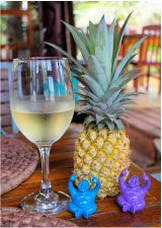 After unpacking we get a map and restaurant recommendations from the manager. We walk into the center of the town, stopping at Dominican for lunch. The monks (and us) celebrate with alcoholic beverages while we wait for our entrees. I have a whitefish with sautéed vegetables. The lightly flavored mustard sauce makes the dish distinctive. William chooses a steak, and while it is ok, he announces that he has been spoiled by Argentine meat. After lunch we stop at a local gelato shop for dessert. The mango tastes like they have creamed a half a mango into my small scoop. We walk toward the ocean and watch some of the surfers and swimmers at Ahu Tautira for a little bit then make our way back to Atamu Tekena, the main street of the town and then turn left on Av. Hotu Matua to reach our hotel. As we walk along William comments that is all uphill! I sometimes think he is exaggerating but in this case he is 100% correct - it is a consistent gradual uphill climb. Funny, we didn't notice that it was all downhill on the way there, but we did comment that it wasn't a bad walk. In the 22C (72F) evening sitting out on the patio we meet some of the other couples staying at the hotel. There is an exchange of good stories. We also stare at the star-filled sky. A great start to our stay on the island. |
AuthorHi. I'm Anne. I wander around the world with William. Enjoy Some of our Favorite Links below
Archives
March 2023
Categories
All
|




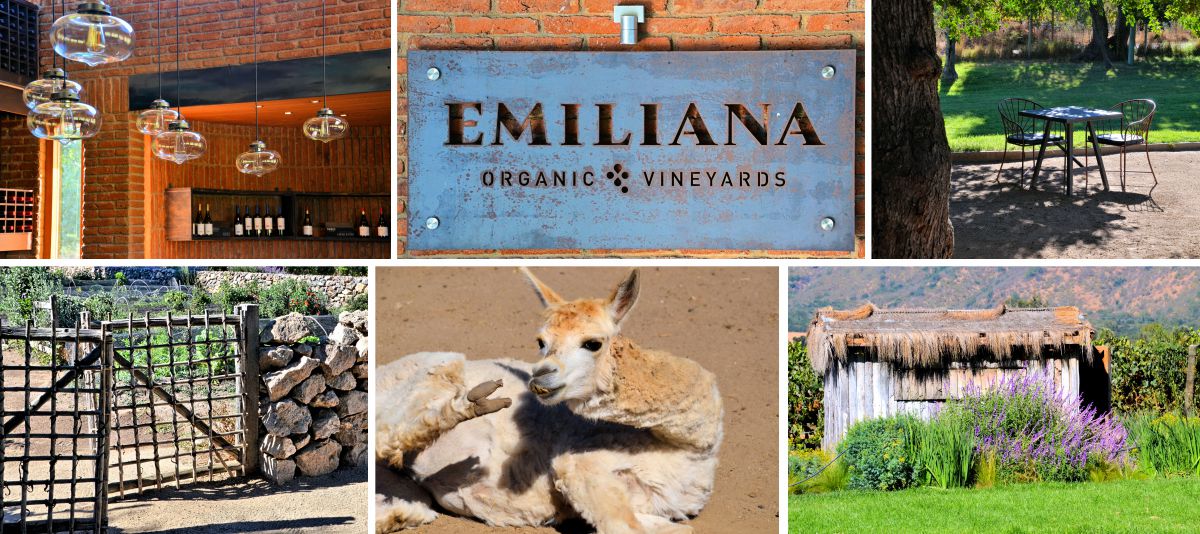



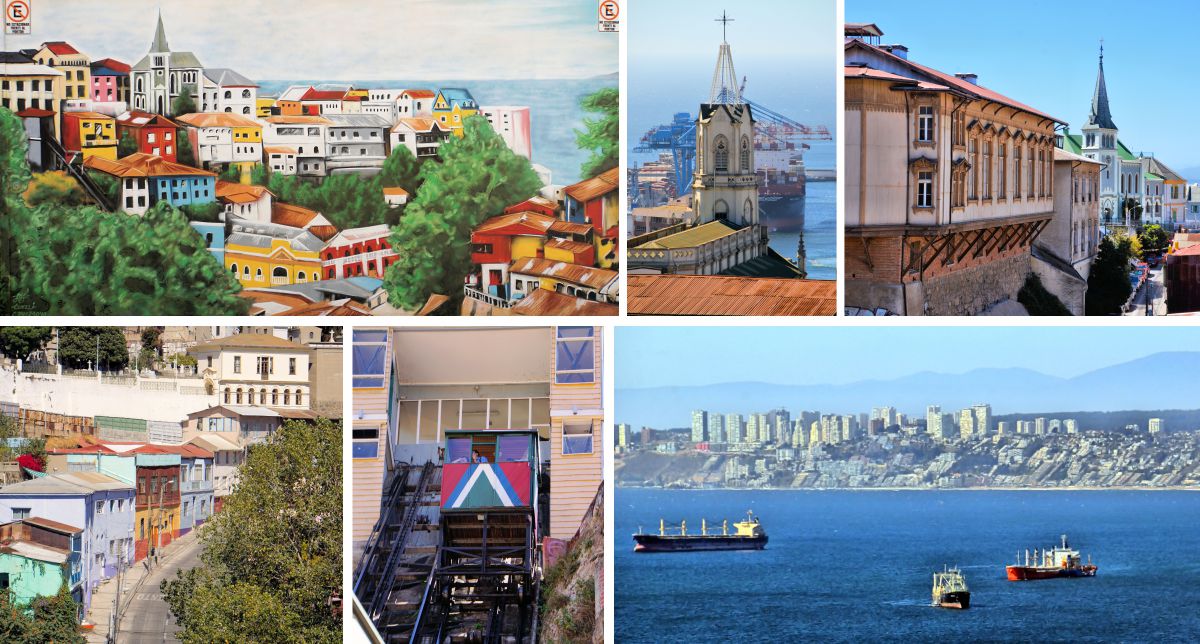





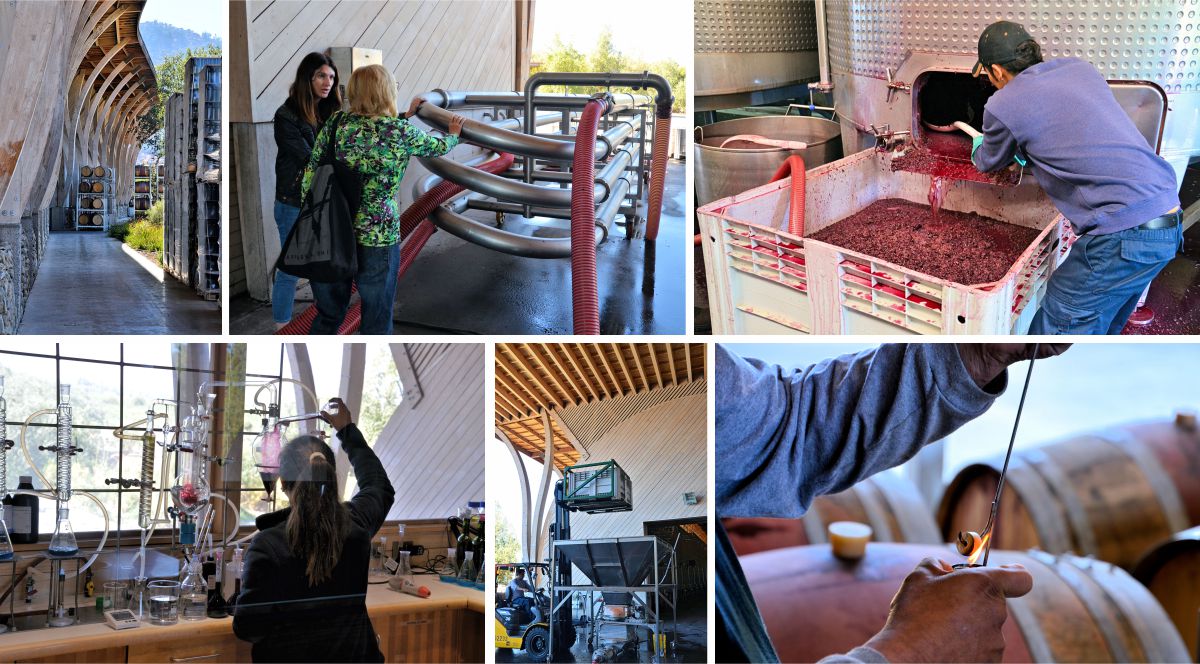

































 RSS Feed
RSS Feed